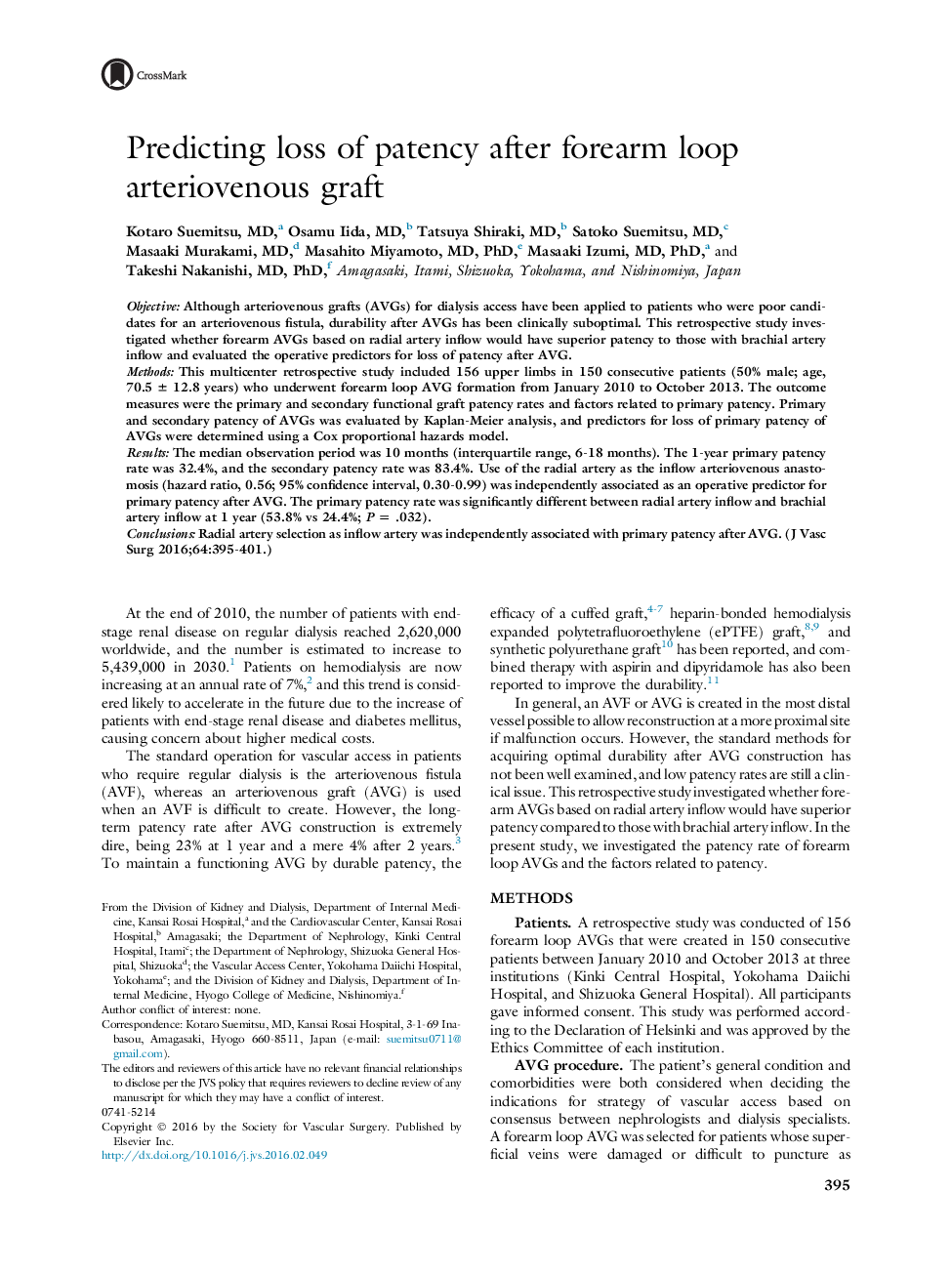| Article ID | Journal | Published Year | Pages | File Type |
|---|---|---|---|---|
| 2987360 | Journal of Vascular Surgery | 2016 | 7 Pages |
ObjectiveAlthough arteriovenous grafts (AVGs) for dialysis access have been applied to patients who were poor candidates for an arteriovenous fistula, durability after AVGs has been clinically suboptimal. This retrospective study investigated whether forearm AVGs based on radial artery inflow would have superior patency to those with brachial artery inflow and evaluated the operative predictors for loss of patency after AVG.MethodsThis multicenter retrospective study included 156 upper limbs in 150 consecutive patients (50% male; age, 70.5 ± 12.8 years) who underwent forearm loop AVG formation from January 2010 to October 2013. The outcome measures were the primary and secondary functional graft patency rates and factors related to primary patency. Primary and secondary patency of AVGs was evaluated by Kaplan-Meier analysis, and predictors for loss of primary patency of AVGs were determined using a Cox proportional hazards model.ResultsThe median observation period was 10 months (interquartile range, 6-18 months). The 1-year primary patency rate was 32.4%, and the secondary patency rate was 83.4%. Use of the radial artery as the inflow arteriovenous anastomosis (hazard ratio, 0.56; 95% confidence interval, 0.30-0.99) was independently associated as an operative predictor for primary patency after AVG. The primary patency rate was significantly different between radial artery inflow and brachial artery inflow at 1 year (53.8% vs 24.4%; P = .032).ConclusionsRadial artery selection as inflow artery was independently associated with primary patency after AVG.
